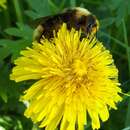en
names in breadcrumbs


Little is known about their communication habits.
This species is in no danger and has no special status.
US Federal List: no special status
CITES: no special status
State of Michigan List: no special status
Bombus ashtoni undergoes complete metamorphosis and passes through egg, larval, and pupal states. All members of this species have reproductive capabilities.
Development - Life Cycle: metamorphosis
There is no known economic importance of this species.
There is no known economic importance of this species.
To the extent that these animals interfere with the food supply and reproduction of their hosts, they impact those species of Bombus negatively.
Ecosystem Impact: parasite
Species Used as Host:
Females eat the eggs laid by the host queen (Fisher, 1987). Bombus ashtoni get carbohydrates from the host resources, presumably stored nectar and pollen.
Animal Foods: eggs; insects
Plant Foods: nectar; pollen
Primary Diet: omnivore
Bombus ashtoni is found in tropical and temperate zones, most notably in North America, north of Mexico.
Biogeographic Regions: neotropical (Native )
Bombus ashtoni parasitize closely related species, such as Bombus affinis and Bombus terricola, and reside in the nests of these bumblebees (Fisher, 1984). Bombus nests are found in the ground and in deserted bird and mouse nests (Carpenter, 1997).
Habitat Regions: tropical ; terrestrial
Bombus ashtoni is terrestrial and polymorphic (indivuduals may be of different sizes). Females are smaller than their host queens. (Fisher and Sampson, 1992).
Bombus ashtoni has two pairs of membranous wings with reduced venation. The hind pair is smaller than the front pair, and both pairs of wings are joined by a row of hamuli or tiny hooks (Krombein, 1997).
Mouthparts are formed for biting. Mouthparts consist of paired mandibles and a labiomaxillary complex formed from membranous connections between the maxillae and the labium. The mandibular, salivary, Dufour's, and venom glands are long and round. In females, venom glands are extremely long and convoluted. B. ashtoni have larger mandibles than their hosts, which are shortened but broader at the apex, and lacking a basal keel (Fisher and Sampson, 1992).
Sternites are thickened, and females have no corbiculae (the pollen baskets formed by long curved hairs, on their hind legs). The female ovipositor is longer and broader than that of the host, and it is strongly recurved.
Bombus ashtoni eggs are smaller than host eggs and are narrowed towards the middle (Fisher and Sampson, 1992).
Other Physical Features: ectothermic ; bilateral symmetry ; venomous
Males are reared before females, especially since males establish flight territories and are long-lived. This means that males are capable of mating more than once. The sex ratios of these social parasites are found to favor females (Fisher, 1987).
Reproduction is short in duration. Males are produced from unfertilized eggs and females are produced from fertilized eggs (Krombein, 1997). Females use wax from the destroyed host egg cells to construct their own egg cells. Eggs are laid near the center of the comb and are distinguishable from host eggs by their rough edges. There is no worker caste (Fisher, 1987).
Bombus ashtoni bees rear no workers, so they rely on host workers to assist them in rearing offspring. Because of this, females have decision-making processes similar to their hosts regarding the number of workers needed and how best to maintain reproductive control over them. The methods by which they determine how many workers are needed and when to reproduce are poorly understood.
The earlier B. ashtoni are introduced into a host nest, the longer they will wait before laying their eggs. The eggs are laid during the worker growth phase of colony development. The result is a reduced number of workers reared in the parasitized nests. Replacement of host eggs with parasite eggs is a gradual process, so an overlap between colony investment in Bombus workers and Psithyrus reproductives exists.
Key Reproductive Features: iteroparous ; gonochoric/gonochoristic/dioecious (sexes separate); sexual ; fertilization (Internal ); oviparous ; sperm-storing ; delayed fertilization
Females guard egg cells until the eggs hatch. They do this by pushing host worker bees away from the cells and by mauling host bees. Mauling occurs when the host queen has lost dominance or is removed. The host bee is grasped from above, held close to the underside of the parasite's abdomen, and is released. The ability to guard the eggs is decreased as the number of parasite eggs increase. The result is the loss of parasite brood. B. ashtoni females attempting to maintain a dominant egg-laying position after the queen has lost dominance face animosity by the laying workers. Also, females do not guard the developing larvae.
Parental Investment: pre-hatching/birth (Provisioning: Female); pre-independence (Protecting: Female)
Bombus ashtoni is a species of cuckoo bumblebee. This means that it parasitizes closely related species such as Bombus affinis, Bombus terricola, and Bombus fervidus by residing in the nests of these bumblebees and tricking the bees into providing resources such as food for them.[1]
Bombus ashtoni is a species of cuckoo bumblebee. This means that it parasitizes closely related species such as Bombus affinis, Bombus terricola, and Bombus fervidus by residing in the nests of these bumblebees and tricking the bees into providing resources such as food for them.